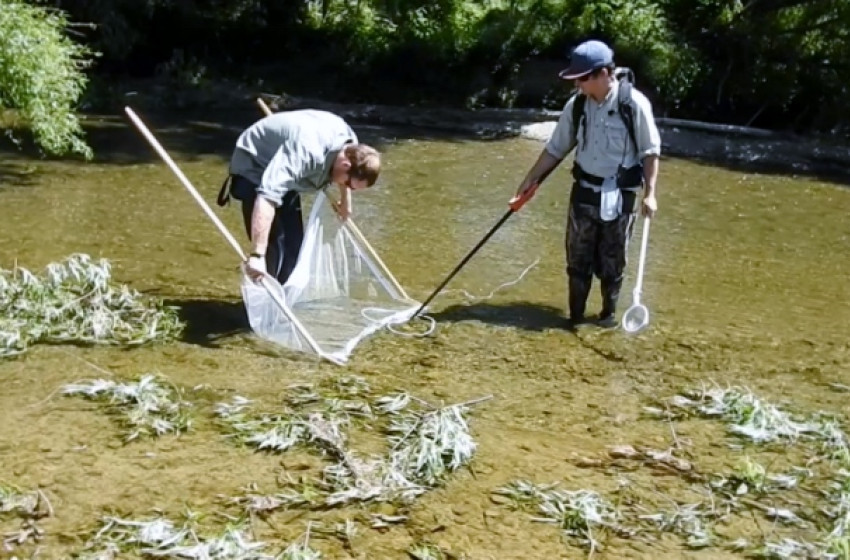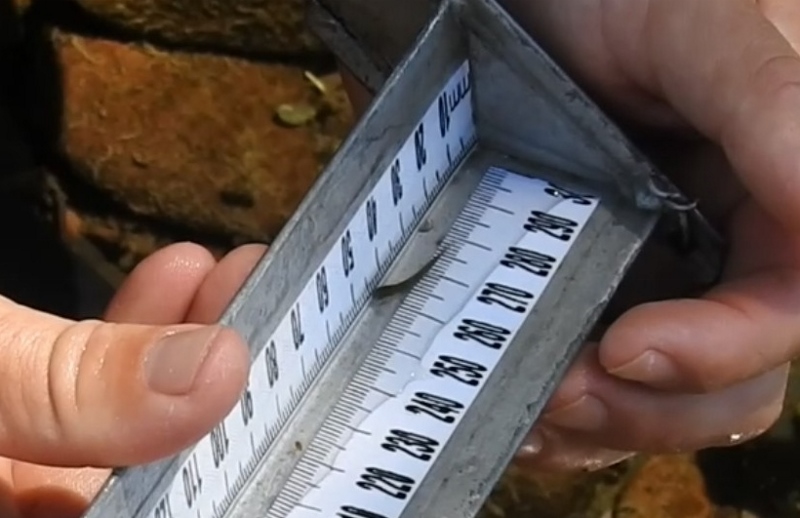Hawke's Bay Reel Life November 2018
- Hawke's Bay
- 27/11/2018

Hopefully, by the time you’re reading this, we’ll have had some decent rain in the region to top up the rivers.
If not, the signs are definitely pointing to a dry summer with low rivers.
Top right: Staff electric fishing in the Mangaonuku River. Check out our video on e-fishing here.
Not ideal, but we’ve been lucky in recent years, especially when you consider Hawke’s Bay is usually fairly dry over summer. Early days yet though, so let's hope for some rain.
Angling this season seems to be going pretty well with some nice fish being spotted all around the region.
There have been numerous hatches on various rivers throughout the day which has been providing some great dry fly action, for those who’ve been in the right place at the right time.
This can’t happen when you’re at home watching TV or mowing lawns, so get out whenever you can and make the most of your opportunities!
Teeny tiny
We have heard of concerns that the floods over winter may have decimated spawning and that no juveniles would have survived.
We wrote an article in the last Fish & Game magazine about the Esk River and how fisheries survive through wet winters, so reading this again should give some insight into how fisheries survive harsh winter conditions.
The Esk did take a big hit which would definitely have had a negative impact on recruitment, but it’s nothing the river hasn’t been through before.
The other fisheries would have come through a lot better off, and staff have seen this through recent electric fishing surveys in the Tukituki catchment.
In one of the 30 metre sample sites they caught, measured and released 65 rainbows ranging from 25mm-70mm!

This newly emerged fry would have come from an egg fertilised around 45 days earlier.
From the two sample periods (October & November) juveniles that were sampled indicated spawning had occurred as early as July, through to late September.
There were floods each of these 3 months… those trout know how to survive!
Tuki tags
As well as recruitment and the movement of juveniles, staff are keen to look at the movement and growth of larger fish throughout the Tukituki catchment.
To achieve this, staff will mount a tagging programme throughout the catchment.
They aim to catch trout right across the catchment so they can be measured, weighed, tagged and then released.
Then the rest of the project is up to you, the angler, to assist.
Each time a trout is caught with a tag, we would appreciate the most accurate details about its weight and length as you can provide, along with the tag ID and location.
We would then be grateful if these fish are then released in the hope that another angler may catch them and we can gather another data set from that fish, to help us monitor movements and growth rates in this catchment.
So once we start this programme (keep an eye on our Facebook page), it may pay to add a measuring tape and some scales to your fishing vest or bag when fishing the Tuki.
Just be sure to keep the trout in the water as much as possible when doing the measuring and weigh it in a net, NOT from the gills.
We will provide some more information about this once tagging has commenced.
Enjoy the start of summer and tightlines!